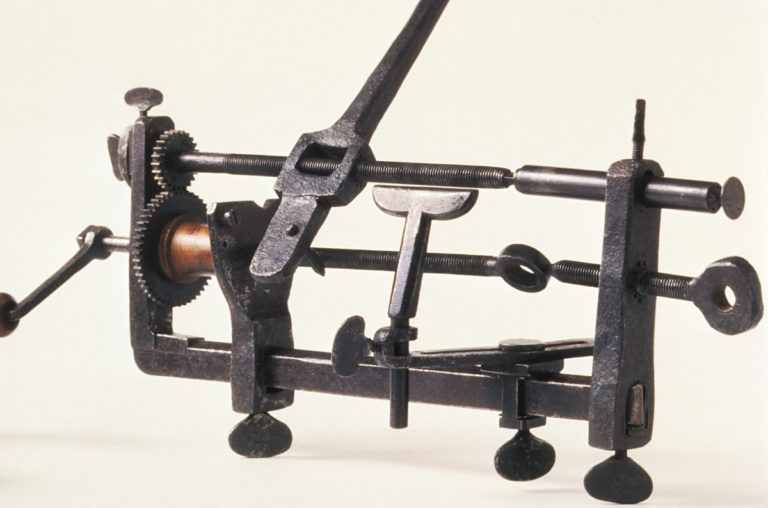Cutter

The Clock-Barrel and Screw-Threads Cutter (Fusee Engine) was a precision tool used by the Dominys to cut threads on fusees, clock-winding barrels, and metal screws. It is a versatile combination tool unlike any other fusee engine or screw-thread cutting lathe encountered in old or modern sources. When in use, the iron frame was gripped in a vise. The engine as photographed is set up for cutting a thread on a metal screw. A brass or steel arbor was fastened on the lower level between a screw bolt (right) and a winding gear drum (left).The cutter automatically moves along the revolving lead screw; and if its blade is pressed against the arbor below, it cuts a screw thread of coarser pitch because of the difference in gear-tooth ratio. The depth of the thread depends upon how much leverage is applied to the cutter. The adjustable tool rest was probably used in the process of deepening or cleaning the work produced by the cutter.
Fusee Engine, Nathaniel Dominy IV (maker or purchaser), Felix Dominy (user), 1760-1835. Iron; Brass; Maple, soft; Apple; Tulip poplar. 4" (H), 15" (L), 8.5" (W). Museum purchase with funds provided by Henry Belin du Pont, 1957.0026.410
Pinion Cutter (between screw plate and header)

This tool was used to cut small toothed wheels called "pinions." It was converted from an old file (the quality of its steel was usually quite reliable) and employed, for example, on brass wire drawn to the correct size through a drawplate (wire plate) and clamped in a vise. This cutter was placed over the metal rod and tapped steadily downward with a hammer. As a result teeth, or leaves, were shaped on the sides of the brass rod, thus forming a pinion.
(Pictured with screwplate and header) Pinion cutter, Nathaniel Dominy IV (purchaser or maker), 1760-1800. Steel. 6.5" (L). Museum purchase, 1957.0084.054
